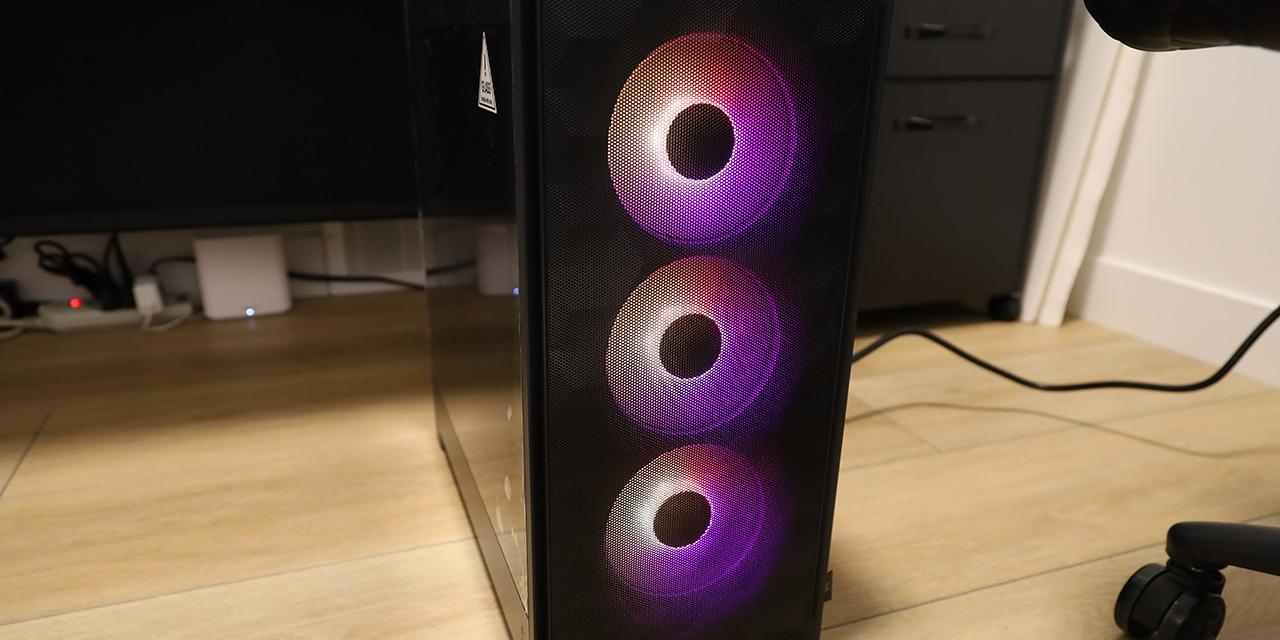Page 3 - Physical Look - Inside
In order to further investigate the internal detail of the Gigabyte P550B 550W power supply unit, some panel removal is required. It is important to note two important concerns before disassembling any power supply unit. First, certain components, such as the capacitors, may cause an electrical shock if not discharged properly. Second, your three-year warranty will be voided if the screws on the power supply unit are removed. Therefore, unnecessary disassembling of a power supply unit should be avoided. Once the top panel of the P550B is removed, a closer look of the electronic components is revealed. The OEM for the power supply is MEIC, which is the choice of Gigabyte for their PSUs.
Let us first take a look at the transient filter stage of the power supply unit. The function of the transient filter stage is to protect the computer from the power grid noise and voltage spikes. In the Gigabyte P550B power supply unit, the transient filter stage contains two X-capacitors, four Y-capacitors, two common mode chokes, and one metal oxide varistor. The MOV here is to prevent the computer from being damaged by lightning surges. It is worth mentioning not all the power supply units in the market have an MOV. There are two sets of X-capacitors and Y-capacitors, with one set of Y-capacitors behind the power plug and the other set of Y-capacitors found on the main PCB board.
Now, we move on to the primary side. The one big capacitor in the photo is from Teapo, which is rated at 330uF at 400V. The temperature is rated at 85c, which is acceptable in terms of durability, but not great. Ideally, I would like to see the main capacitor to have 105c rated operational temperature. This one is a Taiwanese-made capacitor, which strikes a balance between cost and quality. It may not be as good as those Japanese capacitors, but with the limited budget, this is what you can get. Right beside the main capacitor in the photo, there is a long heatsink. On the heatsink, two JCS18N50F MOSFET transistors are used as the main switchers. The JCS18N50F can delivery power up to 11A continuously and a maximum drain-source on-resistance of 0.27 ohms according to the datasheet. Note the lower the drain-source on-resistance, the more efficient the transistor will be.
In the above photo, we can see there is a smaller heatsink to the left side of the long heatsink panel on the primary side. There is a rectifying bridge attached to that heatsink. This time, I am not able to find any information about this rectifying bridge. This is because there is nothing printed on the rectifying bridge chip, and I cannot find any useful information online neither. The thing I like about it is, the rectifying bridge has its own heatsink, which can guarantee the cooling performance. For the APFC MOSFETs, there is another set of JCS18N50F chips on the primary side long heatsink. There is also a STMicroelectronics STTH8S06D as the APFC boost diode.
Interestingly, I do not see any electrolytic capacitors on the secondary side. These polymer capacitors are from China; the majority of them are made by ChnCap, which is a company located in Shenzhen, China. For a modern power supply unit, the power output from the rectifiers is +12V. The +12V output of the power supply unit can just directly use the power from the rectifiers. However, the +5V and +3.3V outputs are converted from the +12V output. The conversion functionality is mainly realized by the components on the main PCB. Meanwhile, there is a Weltrend WT7527 supervisor IC to realize over/under current and over/under voltage protection. More information about the parts mentioned in this review can be found from their respective datasheets from the manufacturer's website.
The Gigabyte P550B 550W is not a modular PSU. Therefore, there is no daughterboard at the rear of the power supply unit to hold the sockets. Instead, all the cables are connected directly to the main PCB. Having good connection quality of those cables is very important. If a cable is ripped off, the user will not be able to reconnect it back without opening the case and using soldering iron. The overall internal design of Gigabyte P550B 550W PSU is very good. Yes, it is budget PSU with low-cost components, but they are placed in a well-organized manner. According to the above photo, you can tell the Gigabyte P550B 550W features good assembly quality and there are no random fly wires.
In terms of cooling performance, there are two things we need to pay attention to for a power supply unit; namely the heatsinks and cooling fan. In this case, we can see two long heatsinks, one short heatsink, and one cooling fan. The number of heatsinks inside the power supply unit is abundant thanks to the organized layout. The size of the fan is 120mm in diameter. A smaller fan is used to keep the enclosure small. According to the manufacturer's website, the BOK BDH12025S uses silent hydraulic bearing to keep noise and durability in check.
Page Index
1. Introduction, Packaging, Specifications
2. Physical Look - Outside
3. Physical Look - Inside
4. Minor Tests and Conclusion





